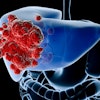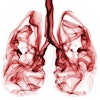CHICAGO - Could a one-scan CT lung screening and cardiac risk assessment be feasible? Perhaps, say researchers from South Korea who performed low-dose thoracic multidetector-row CT (MDCT) in a group of smokers and ran calcium tests on the data.
They found no significant difference in calcium scores between the dedicated gated calcium scoring scans and low-dose ungated scans.
"As a screening tool for detecting coronary artery calcium, EBCT (electron beam CT) is the standard method," said Dr. Younga Bae from Samsung Medical Center in Seoul. "But MDCT has several advantages over the use of EBCT."
For one thing, smokers have a higher incidence of both lung and heart disease, and scanning the heart and lungs separately doubles the radiation exposure, Bae said in a presentation Sunday at the RSNA 2007 meeting. For another, she said, MDCT rather than EBCT is "essential for reducing the radiation dose."
The study sought to compare the utility of coronary artery calcium measurements obtained with a low-dose ungated chest CT protocol with the results of dedicated coronary artery calcium scoring in the same patients.
The group scanned a total of 128 consecutive patients (all men, mean age 62 ± 7 years) twice on a 40-slice MDCT scanner (Brilliance, Philips Medical Systems, Andover, MA). The data were reconstructed using a 25-cm field-of-view and 1-, 2.5-, and 5-mm slices to determine which combination correlated the closest with the dedicated calcium scan.
The dedicated coronary calcium data were acquired in an axial scan at 120 kVp and 196 mAs using 2.5-mm slices and prospective ECG gating at 75% of the RR interval.
For each scan the researchers calculated the area of lesions, the Agatston score, and calcium mass at 90 and 120 Hounsfield units (HU) on a commercial workstation using a 130-HU threshold. The measurements from the dedicated calcium scan served as the reference standard, and a Spearman's correlation test was used to compare the two acquisitions.
Correlation did not differ significantly between the scans, Bae reported.
The correlation coefficients of coronary artery calcium measurements between low-dose CT and the dedicated calcium scans were, for area, score, and mass respectively: 0.848, 0.869, and 0.865 for 1-mm slice reconstructions at 130 HU; 0.888, 0.892, and 0.893 for 2.5-mm reconstructions at 130 HU; 0.802, 0.808, and 0.807 for 5-mm slice thickness at 130 HU; 0.584, 0.626, and 0.588 for 1-mm reconstructions at 90 HU; 0.797, 0.834, and 0.819 for 2.5-mm reconstructions at 90 HU; and 0.793, 0.808, and 0.814 for 5-mm reconstructions at 90 HU.
"Of all the results, 130 HU at 2.5 mm correlated best with reference standard," Bae said. In terms of individual branches, correlation of low-dose CT to the dedicated calcium study was lowest (r = 215) in the posterior descending artery, but adequate in other coronary branches (r > 0.654).
"Application of (low mAs) imaging produces well-correlated calcium scoring tests, and ECG gating did not significantly affect the correlation of results between prospective calcium scoring and ungated CT," she concluded.
Ungated MDCT acquired at low doses is comparable to dedicated calcium scoring CT, "and can be an alternative calcium scoring method" in individual who undergo low-dose lung cancer screening with CT," she said.
Session moderator Dr. Arthur Stillman, Ph.D., a professor of radiology at Emory University in Atlanta, cautioned that previous studies have shown variability of 20% to 30% in calcium scores obtained with ungated CT.
By Eric Barnes
AuntMinnie.com staff writer
November 25, 2007
Related Reading
MDCT promising for long-term prognosis in patients with chest pain, November 5, 2007
BMI's importance loses weight in new atherosclerosis study, September 11, 2007
Dual-source coronary CTA images the calcium-burdened, April 13, 2007
Coronary calcification independently predicts all-cause mortality, May 4, 2007
Copyright © 2007 AuntMinnie.com



















